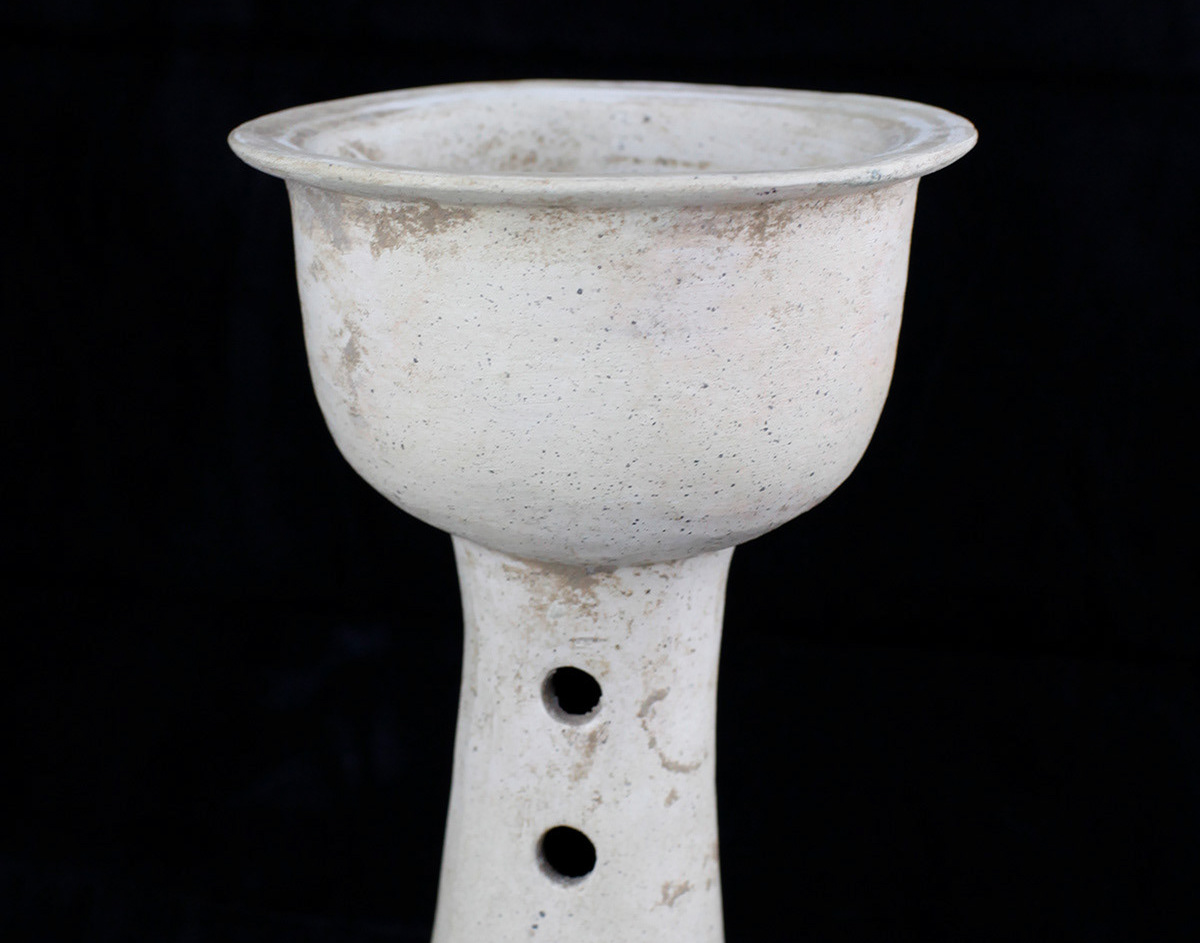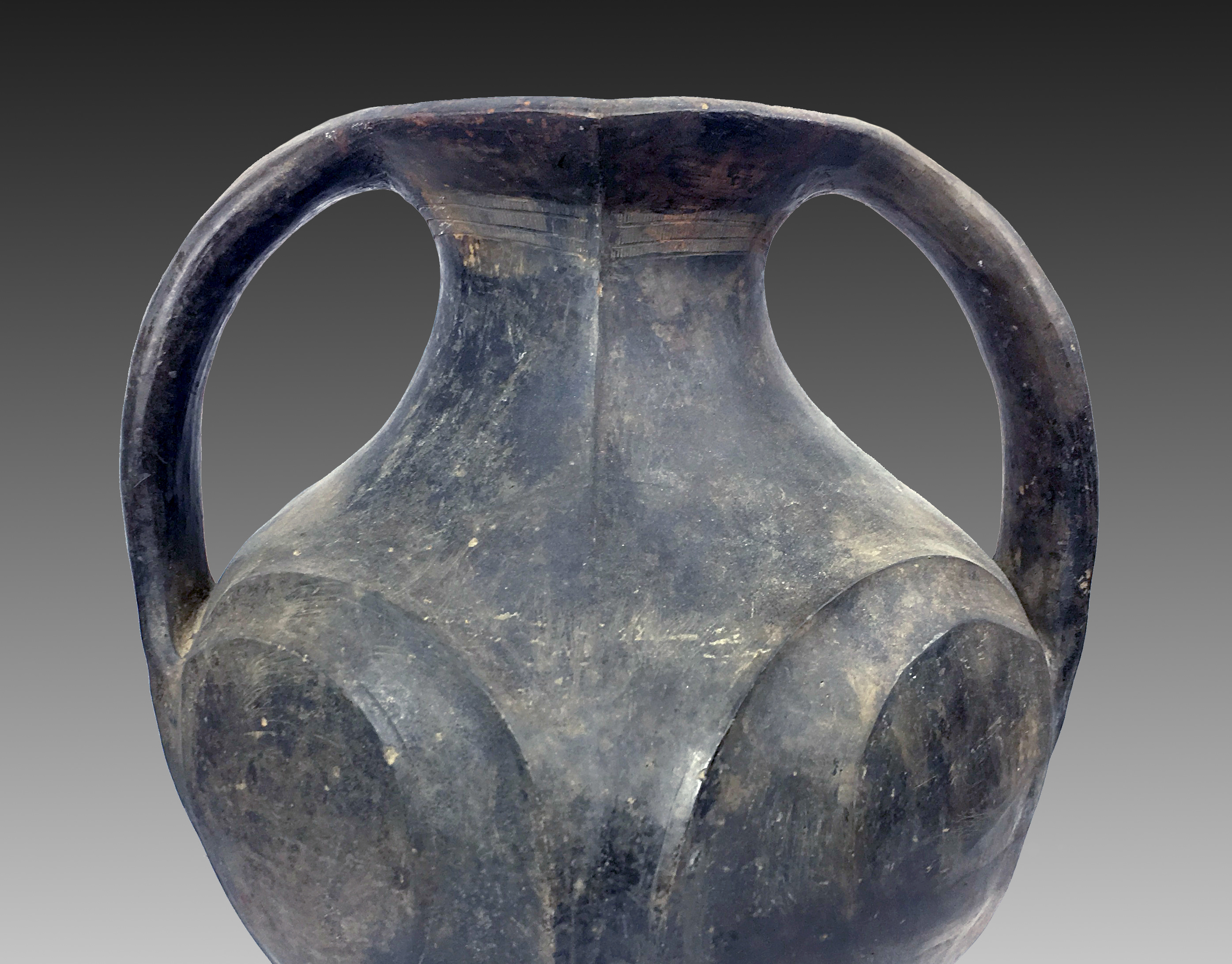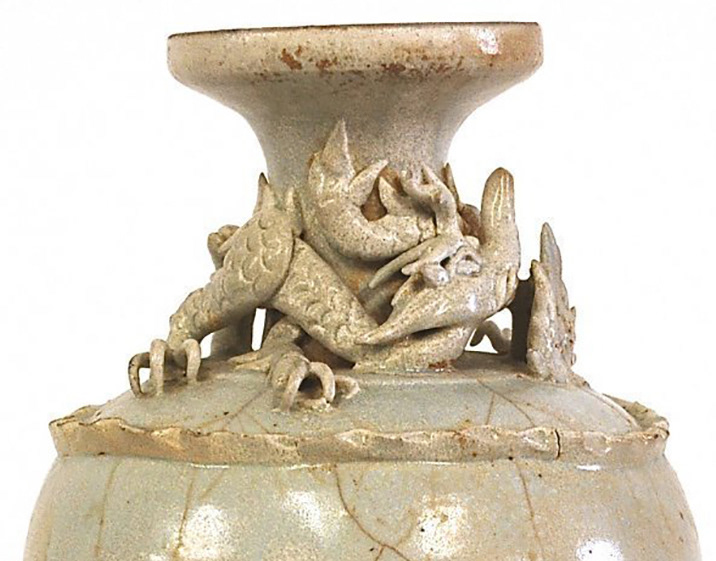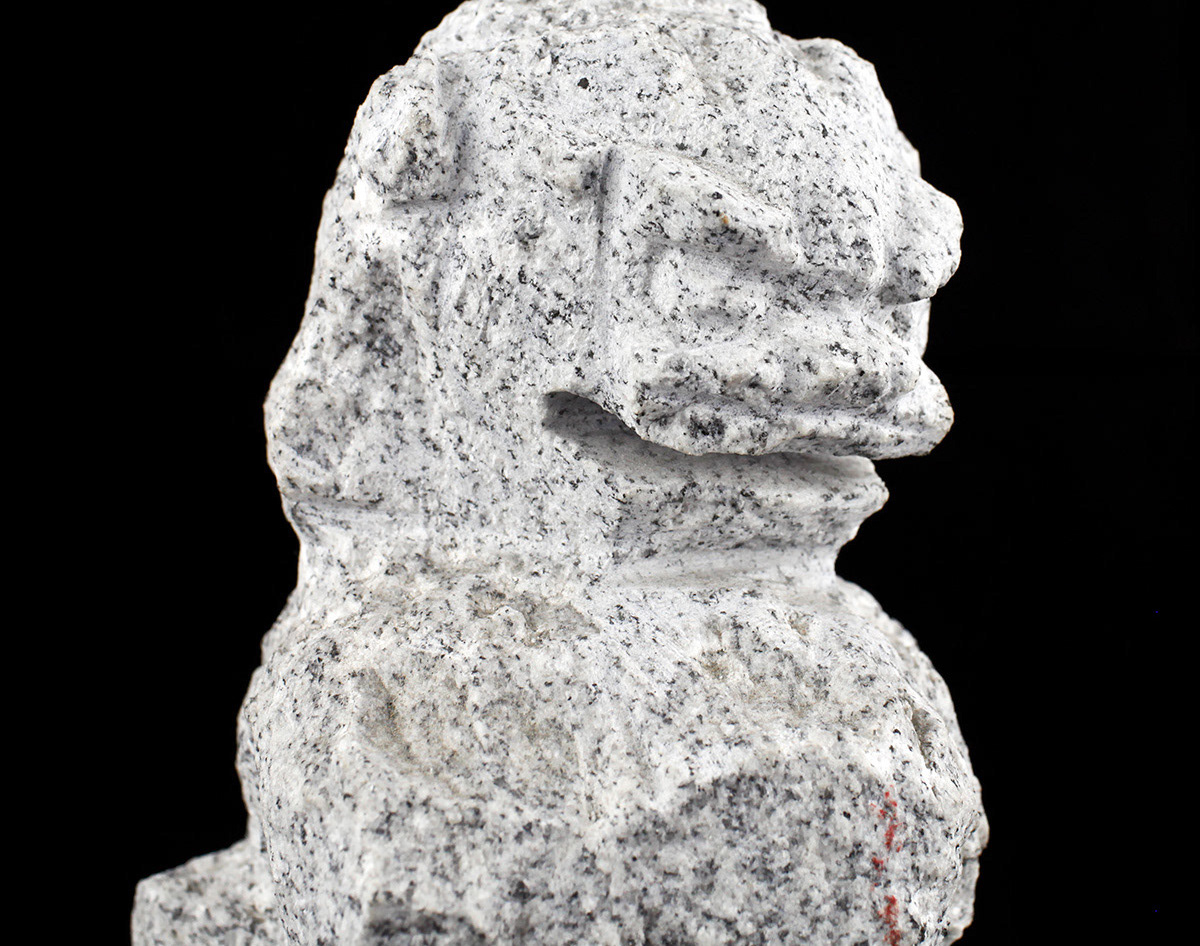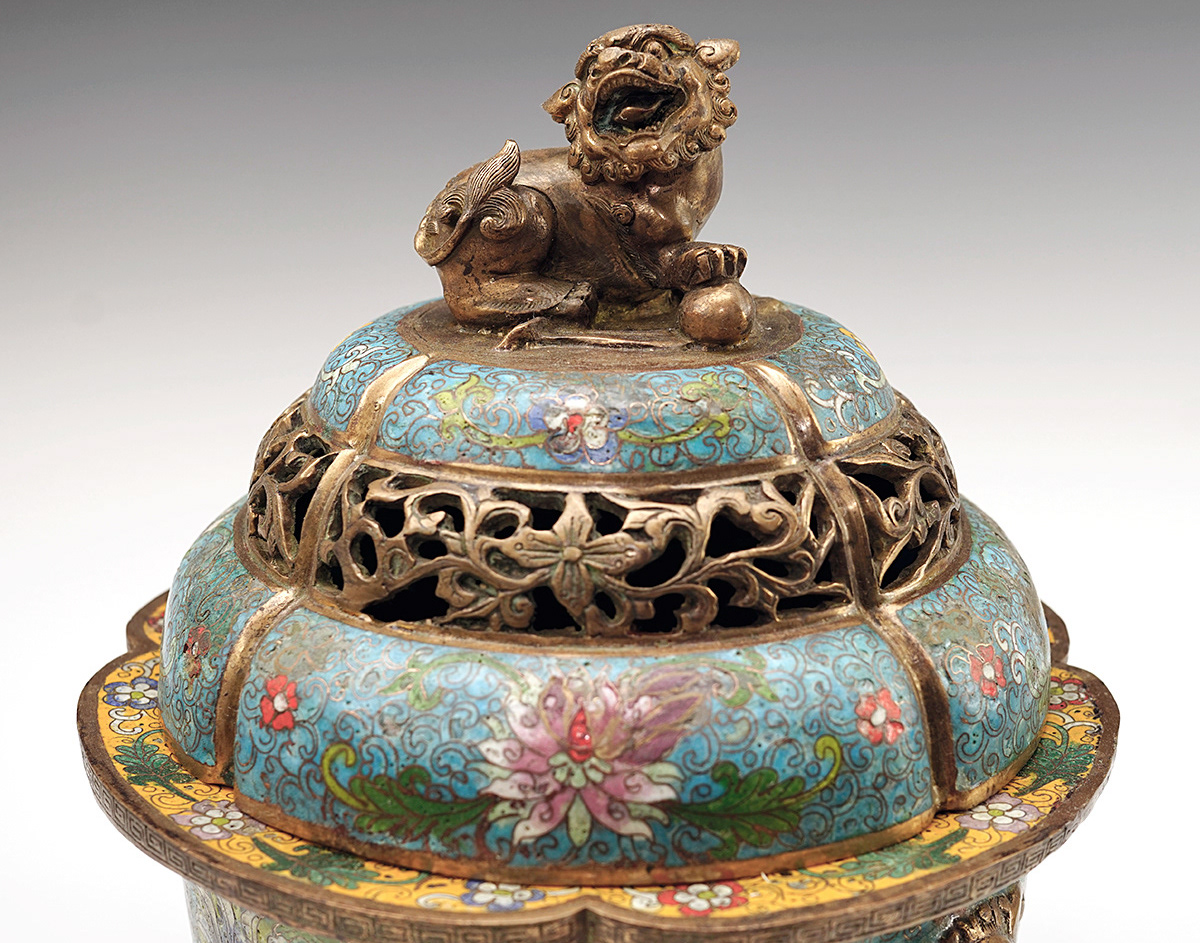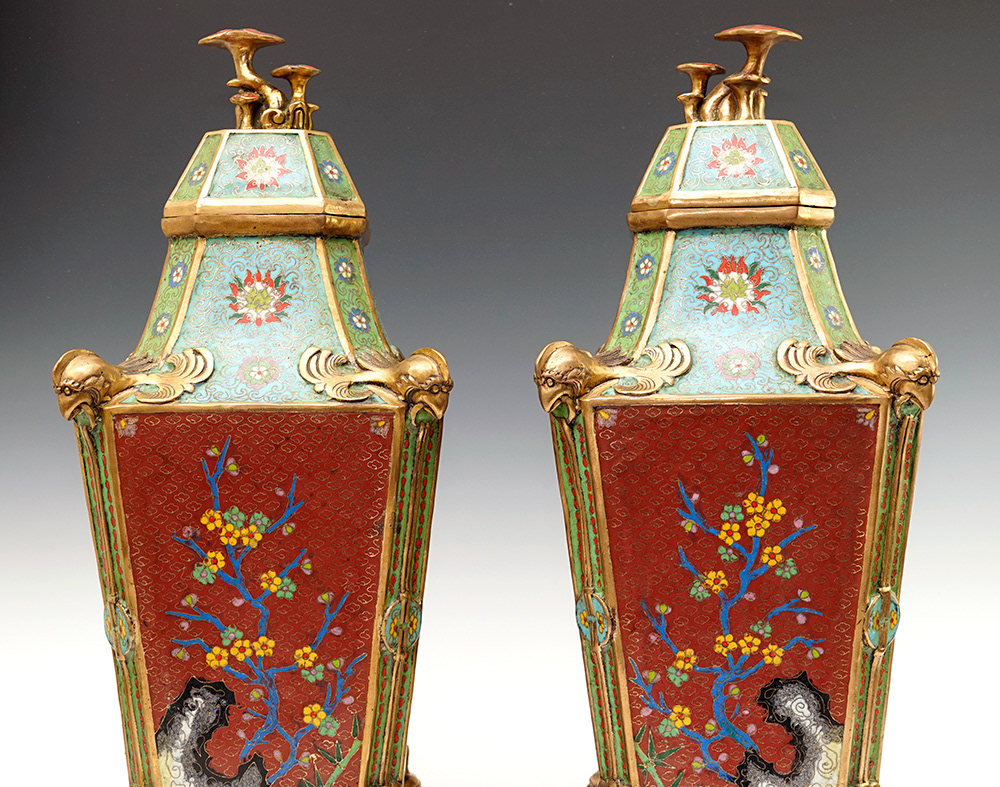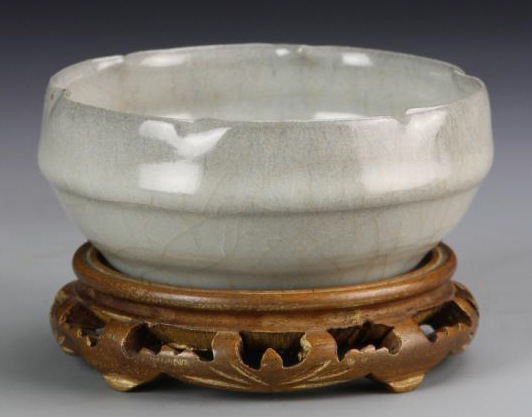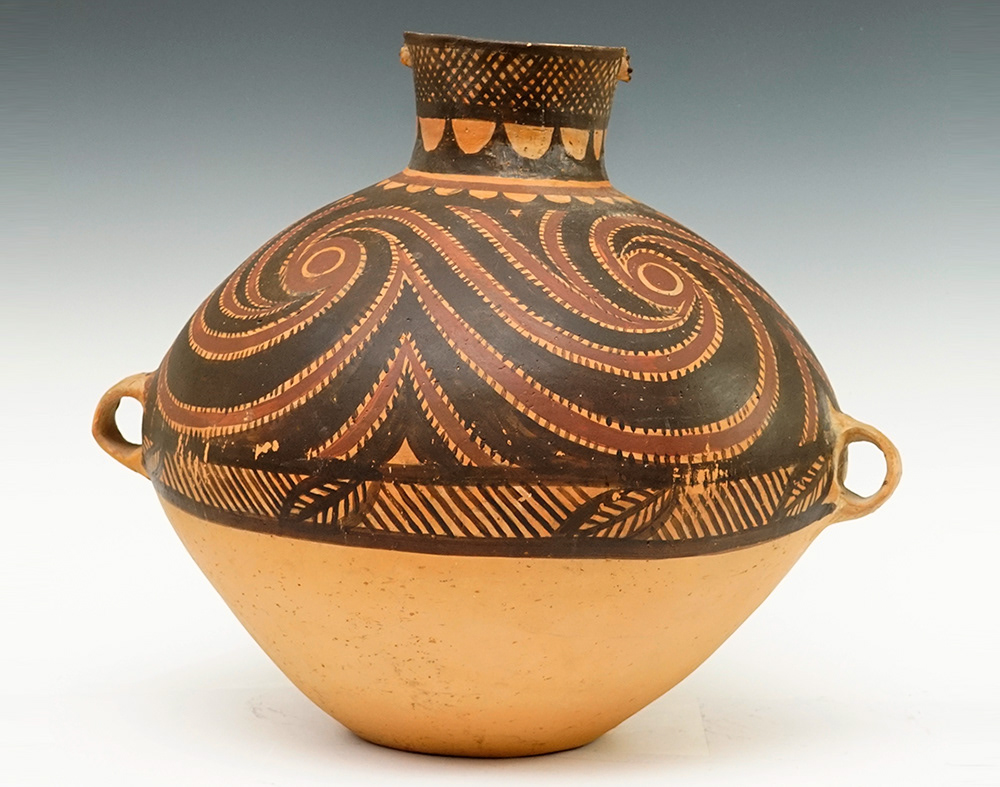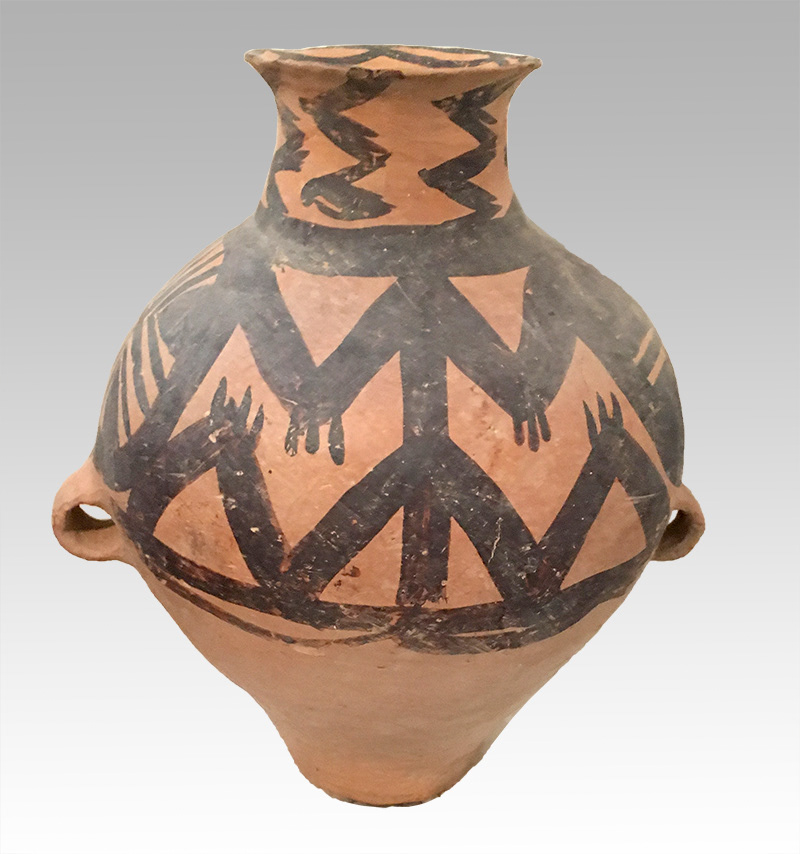

NEOLITHIC PERIOD, MAJIAYO CULTURE, MACHANG PHASE, C. 2350 – 2050 B.C. Large and small two-handled jars, pitchers, bowls, and beakers are the most common forms produced in the Machang phase of the Majiayao (or Gansu Yangshao) culture. Decorative motifs on Machang-period wares are largely geometric and include curvilinear patterns and cross-hatching, and lozenges, triangles, circles, crosses and squares in an endless array of combinations. The zoomorphic figure in the center of this jar is one of the more distinctive images in the Machang vocabulary. Four limbs, bent in the center, are attached to a long torso. Feathers or some other type of tufting are found at the end of the upper limbs and at the joints of all four appendages. These enigmatic motifs are variously interpreted: they are sometimes explained as abstract representations of natural creatures such as frogs; other hypotheses suggest that they are symbolic of either the costume worn by a shaman or the transformation he undergoes during rituals. Earthenware with pigment 16 in. (40.64 cm.) height PRICE AVAILABLE UPON REQUEST

